Your next marketing campaign’s goals and objectives can be achieved through different types of digital advertising.
But if you’re just starting out, the many options are likely to overwhelm you.
The advertising platform and ad type you pick depend on who your target audience is, where they spend their time online, and how they engage with online content.
In this guide, we’ll examine all of the different types of digital advertising options available today. We’ll also give specific advertising applications for each ad type to ensure maximum efficacy for your ads.
How can digital advertising grow your business?
Last year, Google made $147 billion last year, accounting for 80% of its total revenue.
And there’s a reason why Google makes so much money — because digital advertising works!
Most online ads work by targeting either specific keywords or search terms, or by targeting people based on their interests and browsing patterns — making online ads more targeted and effective.
Unlike traditional advertising methods, such as billboards or commercials, online advertising allow for truly unique customization, ensuring only your target audience sees your ads.
This creates a higher return of investment (ROI) because ad spend isn’t wasted being shown to people outside your target demographic.
Online digital ads, whether they are search-based, or visual, help companies increase brand awareness, generate leads, and boost traffic to their website or e-commerce store.
Look to Denver PPC’s case studies to learn how we used Google Ads campaigns to boost sales and awareness for our clients’ businesses.
How to choose the right digital advertising platforms and ad types for your specific campaign
Depending on what your campaign’s goals are will determine which advertising platforms and types of digital advertising formats you choose.
For instance, did you know you can purchase LinkedIn ads to target professionals all around the world? This might be the preferred option if you’re looking to sell more tickets to a virtual networking event.
Or, if you’re looking to sell more physical products, then you’ll want to consider Amazon Ads, Google Shopping campaigns, or even Facebook and Instagram ads to reach your target audiences.
Not only does the advertising platform matter, but also the ad format — products sell better when they’re visual ads, whereas search ads are better for Home Services companies such as cleaners, attorneys, or products and services with shorter sales cycles.
What are the 6 main types of digital ads?
During your digital marketing campaign, you’ll likely use a combination of the following types of digital advertising types to reach audiences across the internet while they’re:
- Browsing social media sites, such as Twitter, Facebook, Instagram, and LinkedIn
- Searching Google for answers to their problems
- Browsing products on Amazon
- Checking their promotional emails
- Reading articles on other sites
- Comparing products on Google’s Shopping tab
- Watching YouTube videos
Let’s get into more detail on the 6 different types of digital ads, and list examples of products, services, or scenarios that work best with each ad type.
Display advertising
Display advertising is the best for building brand awareness for your product, as they’re picture-based ads.
A picture is worth a thousand words, which is useful when character limits can restrict you from accurately describing or promoting your product.
Other times, it’s just better to visually show your audience your product so they’ll immediately click on it.
Physical products such as shoes, clothes, and electronics tend to work well as display ads, whether you’re just promoting a product, or looking to get clicks that direct users back to your eCommerce store.
Display Ads can be banner ads that sit at the top of a website, or in the sidebar of over 2 million websites that are part of the Google Display Network (GDN).
Most display ads are automatically displayed on Google Display Network websites based on contextual keywords used throughout these sites, meaning display advertising can be more hands-off than other types of ads.
Social media ads
Facebook, Instagram, Twitter, and LinkedIn all have their own advertising platforms allowing marketers to show targeted ads to users on their platforms.
Many of these ads look like regular posts in the users’ feed, but are labeled “Sponsored Posts” to let users know they are advertisements.
Social media ads are more passive because the ads aren’t triggered by specific search terms of keywords usually.
Instead, the campaign manager will designate specific demographic information, geo-location, and user interests to let the platforms automatically deliver ads to the relevant audiences.
Social media ad formats include:
- Image ads
- Video ads
- Polls
- Slideshow/carousel images
- Sponsored posts
- Stories
- Lead Generation
- Page Likes and Follows
Social media ads are the most effective at building a fan base or increasing the followers of a particular business page, but also work well for selling physical products.
Search ads
Search ads are text-based only ads that usually appear in the top three spots of a search engine.
These kinds of ads are almost indistinguishable from organic search results, except they must be labeled as “Ad” in front of the domain name.
For companies that want to get to the top of Google search results, Search ads are the way to go.
Search ads use biddable keywords to let marketers specify the cost per click they’re willing to pay for a user to click on their ad, thus creating the pay-per-click (PPC) model that’s so popular today.
Search ads are effective for businesses looking to generate more phone calls or traffic to their website, and especially for lead generation, when businesses need users to fill out contact forms to give to their sales teams.
Video ads
Most video ads are shown on YouTube before a video starts, or as a sponsored post on Facebook with an embedded video.
Video ads are essentially moving Display ads that excel at telling stories and gaining brand awareness.
Because video content is highly shareable, their value goes further than other types of ads.
Software products, physical products, clothing, and travel products all benefit from video advertisements.
Email marketing promotional ads
Email marketing ads work best for targeting existing customers, regularly sending product updates or seasonal promotions to the inboxes of people who opted in to receiving promotional emails.
Unlike other types of digital advertising types on this list, which only show as long as you’re paying for them, emails essentially last forever. There is no expiration date on an email — the promotion may have expired, but the email will sit in your user’s inbox likely for years.
Native ads
Native ads are a type of ad that more closely resembles a news article or blog post than an advertisement.
For example, when scrolling on a news website, once you reach the bottom of the page you might encounter a headline that says “Around the Web” and then show thumbnails and article headlines that look like additional reading. However, these are actually “native ads.”
Of all the ad types, native ads are the most controversial, and potentially misleading, requiring a very specific application depending on the marketing campaign.
Native ads are effective for directing traffic from other websites, such as news sources, to other blogs or websites to boost traffic.
Hire Denver PPC to Manage Your Multi-Channel Marketing Campaign
Denver PPC is a Google Partner company experienced in handling and setting up online digital advertising campaigns.
Whether you’re running Google Ads, Facebook Ads, Bing Ads, or more, our team is here to optimize and run your campaigns for maximum success.
We also offer additional white label PPC outsourcing and white label PPC management for small marketing agencies looking to offer their existing clients more services.
Have an existing paid advertising account? We’d love to take a look and give you a Free 10-Point Account Review to show you how to improve your campaign accounts.
Text or call us at 877-584-3772 or send us a message to get started!





